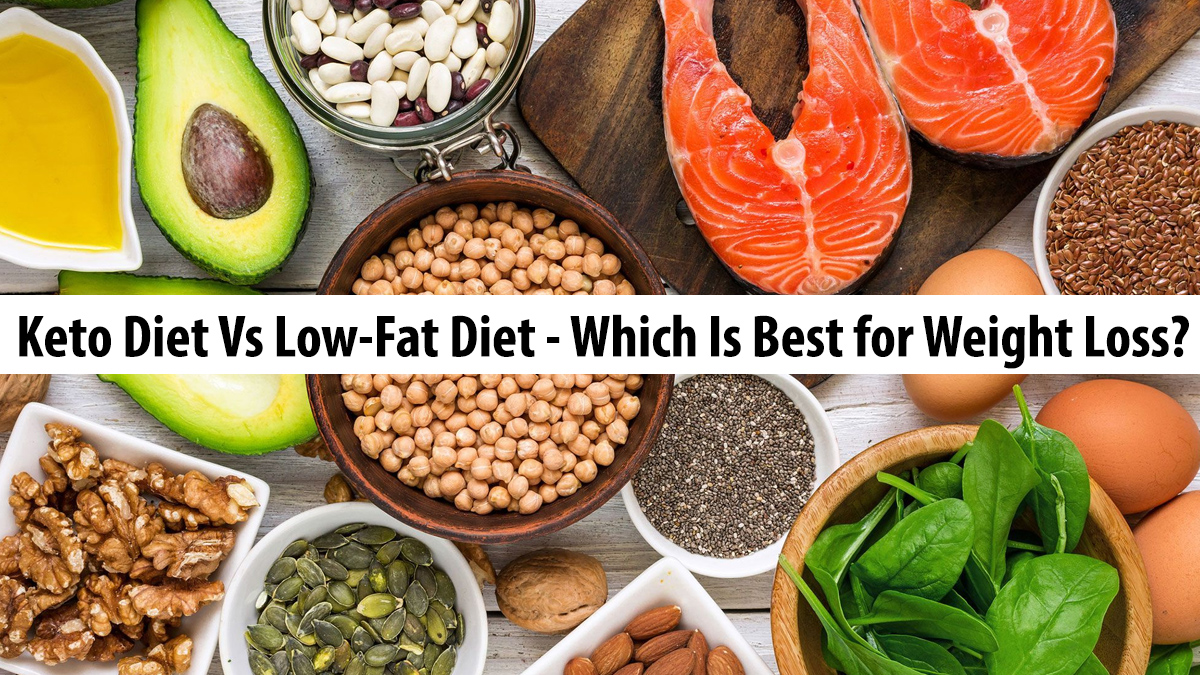Keto Diet Vs Low-Fat Diet
You may be wondering: What is the difference between the Keto Diet and the Low-Fat Diet? Well, here is a comparison between the two diets. Keto diet is high in fat, while the Low-Fat diet is low in carbs and protein. Which is better? Read on to learn about the Keto diet and its advantages and disadvantages. Then decide whether it is right for you.
Keto diet
A popular question is: What is the difference between a Keto diet and a low-fat diet? Although both are low-fat diets, they differ a great deal. While a low-fat diet is low-carb, a ketogenic diet has a high-fat content. Fat, and especially animal fat, is essential to a healthy body, and a high-fat diet has numerous health benefits.
In one study, a group of people who followed a ketogenic diet lost less fat than those on a low-fat diet. Despite the difference in calorie intake, the low-fat group lost about half as much fat per day as the keto group. Ultimately, the low-fat group lost more fat and more muscle mass than the ketogenic group. Ketogenic dieters lost nearly half as much body weight.
In addition to being more restrictive, the keto diet may be more beneficial for weight loss than a low-fat diet, as it will produce more weight loss over time. Many people who follow a low-fat diet replace their fat intake with refined, processed carbohydrates. The truth is that eating simple carbohydrates is worse for you than eating fat. In addition to this, people on a low-fat diet will often avoid plant foods altogether.
While the ketogenic diet doesn’t require tracking calories, protein, or fat, it may be a better choice for some people. The low-fat version can be more challenging to maintain if you have a history of heart disease or other health problems. Similarly, it’s not recommended for pregnant women or those with certain conditions, including type 1 diabetes. A healthy diet is essential for everyone’s health.
A low-carb ketogenic diet requires the consumption of 20 to 50 grams of carbohydrates per day. In order to lose weight, a person must enter a stage of ketosis (fat burning) in order to produce ketones. Typically, people with this condition consume only 20 grams of carbohydrates per day. However, the ketogenic diet requires less than half the carbs of a low-carb diet.
The ketogenic diet has been around for over 100 years. It was initially used to treat epilepsy in children, and it was eventually used to treat many conditions. It has since been used for neurological disorders, cancer, and other conditions. Despite its popularity, the Adkins Diet has been widely criticized as an unhealthy one. This was the first diet to promote a high-fat, moderate-protein diet.
A modified keto diet increases energy density, which is beneficial for reducing cholesterol levels. A high-fat diet is bad for your health, while a keto diet boosts satiation. The latter can cause you to overeat, and can lead to a life-threatening condition. For most people, it’s better to follow a low-fat diet and a healthy eating plan. This diet isn’t for everyone, and it’s not for everyone.
Low-carb diet
The benefits of the low-carb diet are many, including improved insulin sensitivity, reduced appetite and cravings, and lower blood pressure. Studies have also shown that people who follow this diet have lower cholesterol levels and a healthier skin. Some researchers are even linking the keto diet to improved gut bacteria and longer life. If you’re new to keto, the first step is to clean out your pantry and add some staples.
While the benefits of the keto diet may seem overwhelming, this diet isn’t as complicated as it may seem. You should avoid all sugary foods and refined carbohydrates, as well as grains and starches. You should also limit your intake of unhealthy fats, such as trans fats and vegetable oils. Instead, opt for healthy fats, such as extra-virgin olive oil and coconut oil. Alternatively, you can substitute these fats with butter or lard.
There are several different types of keto diets. The low-carb diet is more popular than the modified keto diet, which mimics the effects of fasting but allows diabetics and seizure sufferers to eat normally. Several variations of the ketogenic diet are available. Each has its benefits, but one common goal: reaching ketosis. If you’re interested in a low-carb diet for keto, check out the many research-based recommendations from people with the same goal.
Despite the benefits of this diet, it is important to make sure that you are taking in the necessary nutrients. Low-carb diets tend to lack fiber, certain micronutrients and multivitamins. As such, you should focus on high-quality proteins, nutrient-dense vegetables and fruits, and sufficient amounts of unsaturated and saturated fats. Low-carb diets may not be for everyone, but they can help you lose significant amounts of fat.
One disadvantage of a low-carb diet is the high-calorie intake. While low-carb diets may be beneficial for some people, most of us do not need to count calories or protein intake. A high-fat diet also has many benefits. Low-carb diets have a more difficult time regulating our hunger. They can cause unpredictable cravings and lead to an inconsistent weight loss. If you’re unsure about whether keto diet is right for you, consider talking to a doctor.
Counting carbohydrates is difficult when you’re trying to lose weight. Counting total carbohydrates makes it harder to include the healthy fats and leafy greens that are essential for your health. Counting macros and grams of carbs may not work for you, so it is important to use the net carb method instead. You can also cut down on your sweeteners and low-carb treats. However, these are still not the best ways to lose weight and keep your body in shape.
A ketogenic diet involves a high-fat diet. The goal is to reduce the intake of carbohydrates to 50 grams a day. In addition to limiting carbs, a ketogenic diet also allows more protein and fat, which makes it a better option. But, it is important to note that most people will not benefit from a ketogenic diet, especially if they are prone to health issues.
High-fat diet
Many health advocates recommend a low-fat or high-fat diet, but is this truly beneficial? In fact, the American Cancer Society, American Heart Association, and many other institutions have found that a high-fat diet is harmful to your health in the long run, and even to your short-term health. Even more, there is no scientific evidence that fat is linked to cardiovascular disease. A keto diet, on the other hand, is filled with healthy fats.
A typical American diet contains approximately 50% carbohydrates, which are converted to glucose in the body and used by the cells. By restricting carbohydrates, you can force your body to switch to burning fat and ketone bodies for energy. This process is called ketosis and requires the conversion of carbohydrates to fat and ketones. The mainstays of the keto diet include nuts and seeds, full-fat dairy products (such as Greek yogurt), nonstarchy vegetables, and oils. Meat and fish are also included in the diet, but in much smaller amounts.
Protein is an important part of the keto diet, but it should only be consumed in moderation. Overeating protein hinders the process of ketosis, because excess protein is converted to glucose. Additionally, too much protein may cause kidney problems. In healthy individuals, high protein doesn’t cause problems, but it can exacerbate kidney issues in individuals with moderate kidney disorders. You can avoid pitfalls of the keto diet by following the advice of your doctor.
The keto diet is more restrictive than a low-carb diet. You can only eat about half as much fat and less than half the carbs in a typical low-carb diet. You should weigh the pros and cons of each diet before making a final decision. It’s important to remember that neither diet is 100% beneficial for everyone. It is best to choose a diet that suits your lifestyle.
As with any new diet, it is best to start small and work up. The first few days of the keto diet may be challenging at first, but the rewards are worth it. Keto has been proven to reduce the risk of heart disease and stroke. By decreasing foods that cause inflammation and increasing healthy fats, it can reduce your risk of these diseases. However, lowering carbohydrates is not an easy transition for everyone. It takes time to make the switch, but focusing on the health benefits of the diet can help build your willpower and keep you focused on the process.
The main differences between a high-fat and keto diet are in the macronutrient composition. On the keto diet, carbohydrates are allowed to make up about 50 grams of calories, while fat accounts for the rest of the calories. However, the low-fat diet burns 70 grams of calories per day, while the keto diet burns only about half that amount. While carbs are healthy, they can also add extra calories to your diet.

